If you’ve been searching around anything around text-to-speech or TTS technology, then you’ll most likely have heard of Speechify. You may also wonder what makes speechify different from other text-to-speech programs or perhaps how it works.
We’ll be covering all of these questions within this article.
What is Speechify?
Speechify is a text-to-speech software that allows users to listen to written content in an auditory format.
It uses advanced artificial intelligence algorithms to generate speech from text, converting written content into spoken words in real time.
The application can be used to listen to a wide range of content, including books, articles, and documents, and it provides a range of different languages, voices, and reading speeds to choose from.
Speechify is designed to help individuals who find reading difficult or who prefer to listen to content while they are on the go, such as while commuting or working out.
It is also useful for people with visual impairments or other conditions that make reading text difficult.
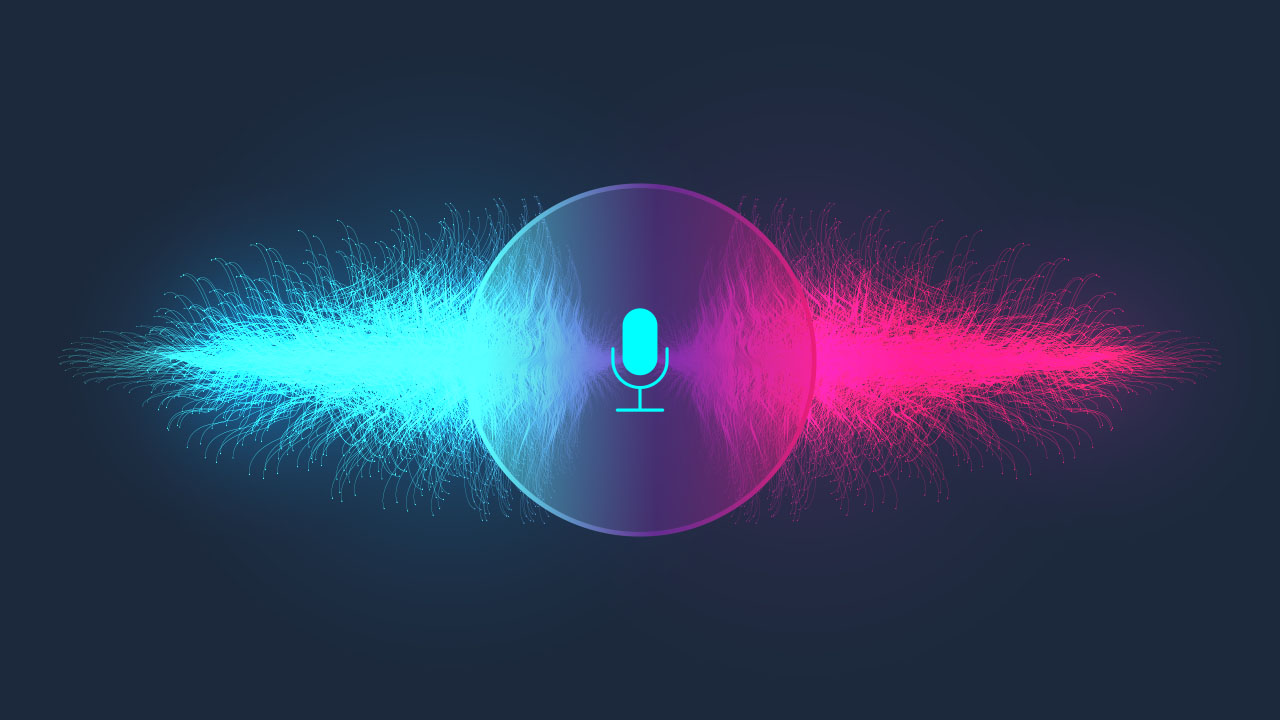
What makes Speechify different from other text-to-speech applications?
To put it simply, Speechify is a text reader application that’s main function is to read text from documents, web browsers, e-mails, etc.
This makes it very different from other TTS AI voice generators such as FakeYou, Uberduck or even Typecast.
The program itself is designed to help people who have reading handicaps or need assistance with reading. The program acts like a personal assistant who reads all the text for you.
This is perfect if you prefer to listen, rather than read your favorite stories or news articles.
The benefit of Speechify is that you can turn almost any written text document into an audiobook or an audio story, making it very handy and useful for almost anyone.
However, one of the big differences between Speechify and other text-to-speech applications like Typecast or Murf, is that it lacks the capability to utilize emotional speech.
Typecast is an AI text-to-speech tool that also utilizes text-to-speech technology, but the difference is in its capability to manipulate the emotional ranges of the speech.
This means that the user can change the pitch, tone, pronunciation, and timbre of the voice, a function that Speechify currently lacks.
Typecast also has the capability to produce dialogue with multiple voice actors, making the conversion sound much more realistic, whereas Speechify only allows you to choose one voice reader at a time to read your text documents.
The big difference between Speechify and other text-to-speech applications would lie in its utility and use case.
While Speechify is a great text-reading application to help users read a novel or article, it has limited options for creatives who want to produce original content.

Typecast vs Speechify: Which is better for you?
Typecast and Speechify are both text-to-speech (TTS) applications that use artificial intelligence to convert written content into speech.
However, they differ in their approach to generating speech and the features they offer.
Typecast is a TTS application that is designed primarily for content creators such as YouTubers or Podcasters.
Typecast offers a range of different voices and languages to choose from, and it allows users to customize the pitch, speed, and tone of the generated speech.
Typecast also offers the ability to export the generated audio in a variety of different formats, making it easy to incorporate into a wide range of media projects.
Speechify, on the other hand, is a TTS application that is designed primarily for individuals who have difficulty reading or who prefer to listen to written content instead.
The application offers a range of different voices and languages to choose from, and it allows users to adjust the reading speed and volume of the generated speech.
Speechify can be used to read out a wide range of content, including books, articles, and documents, and it offers features such as text highlighting and the ability to save and share audio files.
While both Typecast and Speechify use AI to generate speech from text, the primary difference between the two is their target audience and intended use cases.
Typecast is designed for content creators who need a high degree of control over the generated speech, while Speechify is designed for individuals who need a reliable and easy-to-use TTS application for personal use.
How to use Speechify?
The application is typically accessible through a web browser or a mobile app and can be used on a variety of devices, including computers, smartphones, and tablets.
Speechify also includes a Chrome extension which makes it very handy to utilize. It can read google documents, e-mails, Wikipedia pages, or any website article for you.
Step 1: Go to Web App
Upon visiting the Speechify website, you can click on ‘Go to Web App’ at the top right corner and you’ll be brought to the main interface.
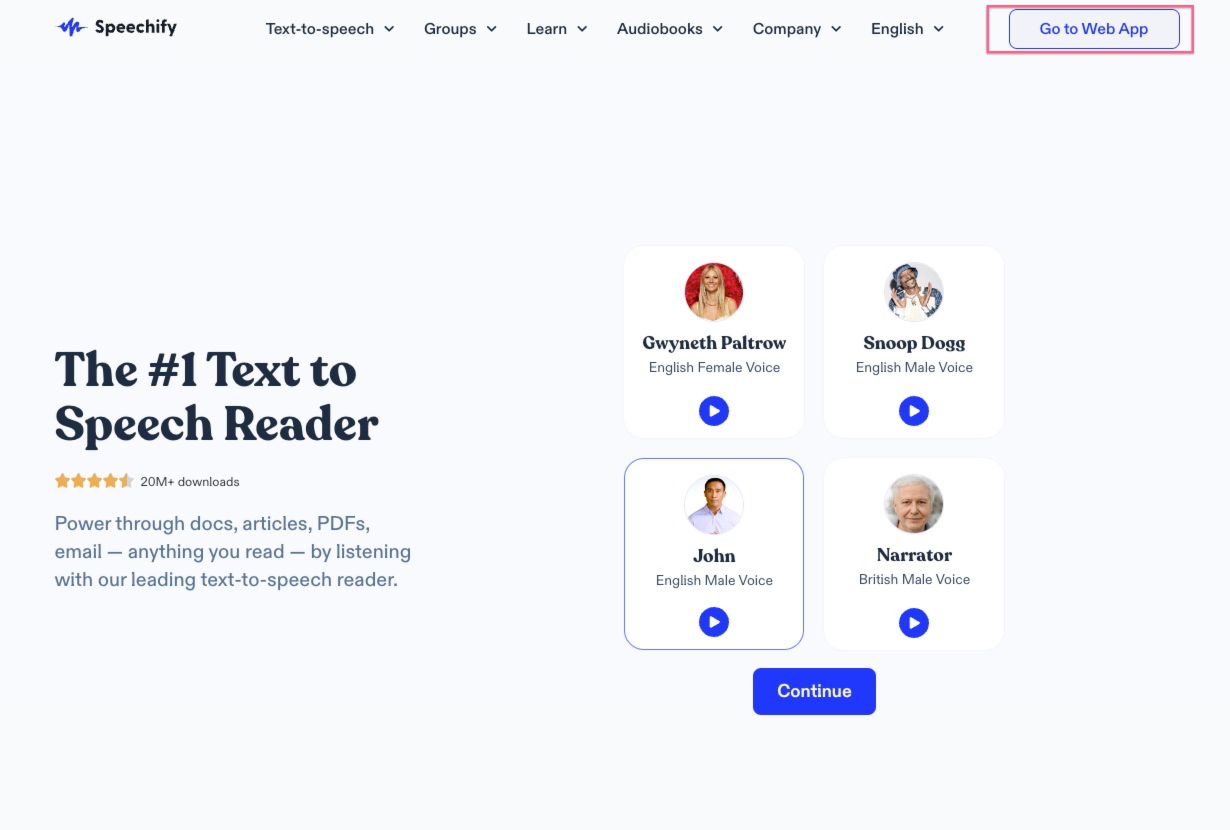
Step 2: Select a Document
You can click on the ‘New’ button which will then open up a list of platforms where you can retrieve your desired document.
Alternatively, you can just drop the file directly to have the app read it for you.
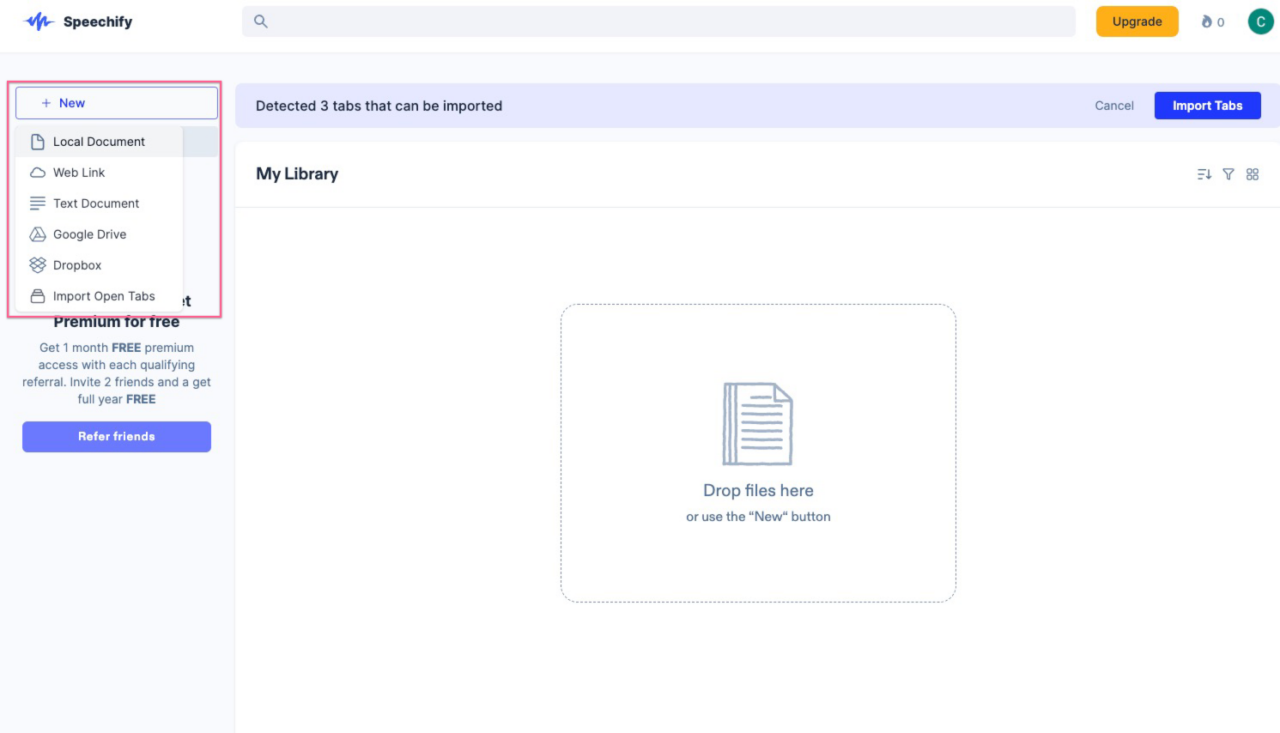
Step 3: Choose a Voice
Once your document has been uploaded, you may select a voice to read your document. You may control the speed at which the voice reads your document.
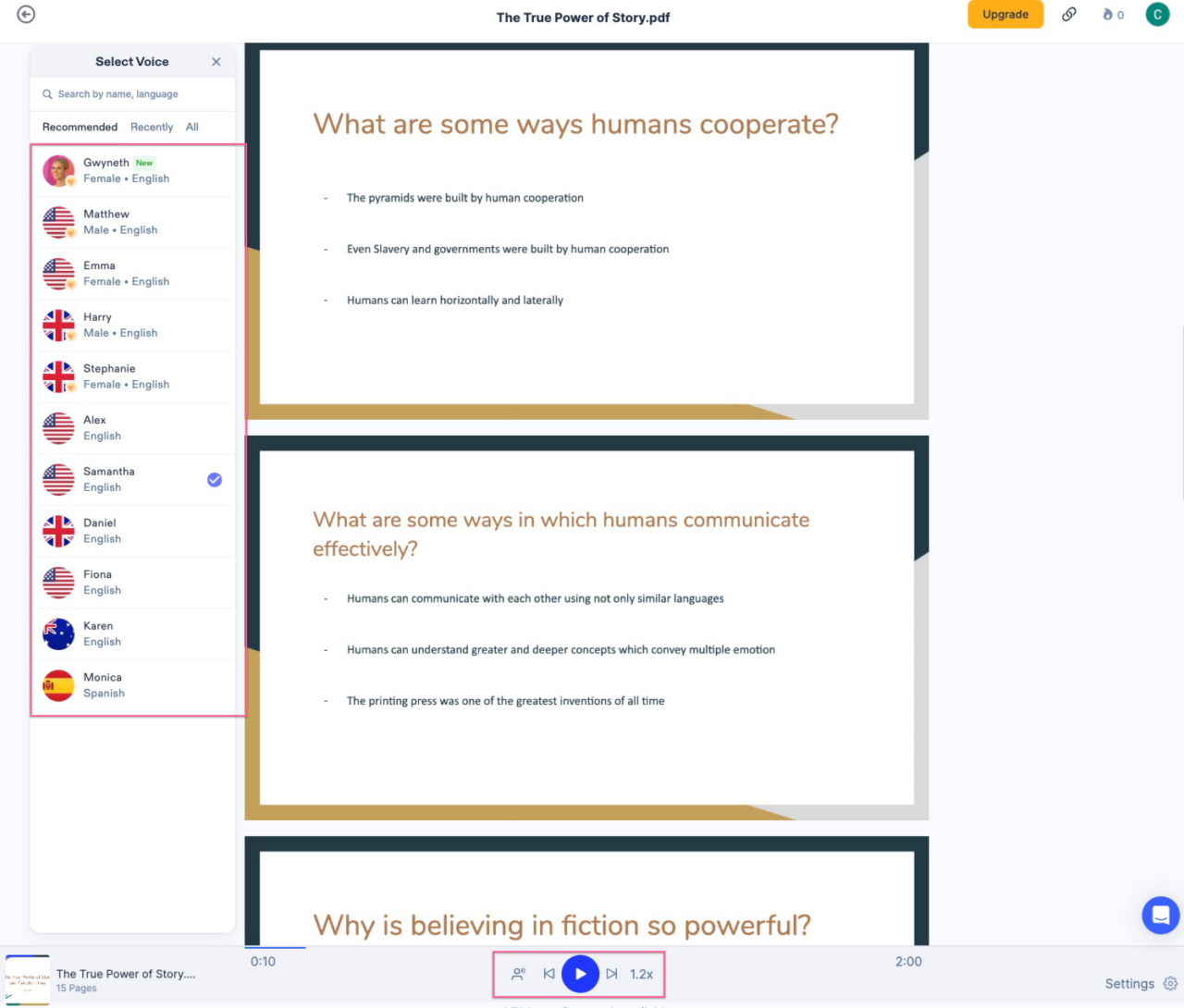
Step 4: Get the Chrome app
If you want to use TTS to read written text files on your browser, you can download the chrome extension.
The chrome extension is a very nifty tool that allows you to read through Youtube comments, Wikipedia pages, and more.
All in all, Speechify is a very handy tool for those who want to utilize text-to-speech to help them read content that they would otherwise have difficulty reading by themselves if suffering from visual impairments such as Dyslexia.
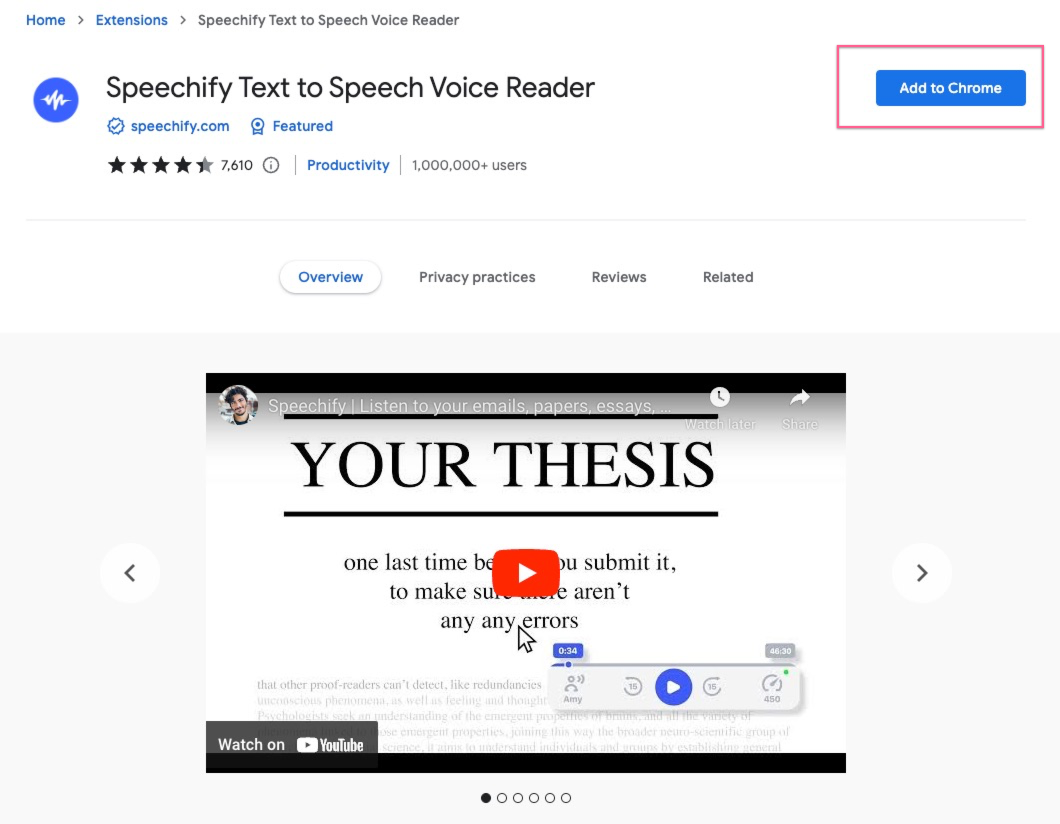
What are the best Speechify alternatives?
While Speechify has quite a lot of uses, there are other alternatives that are quite similar to it.
Natural Reader
Natural reader is another text-to-speech application that has similar capabilities to Speechify. They’re both text readers which use AI voices to read computer files and documents.
Another nifty tool that pretty much competes with Speechify in use case and customer audience.
TTS Reader
Another cool online text-to-speech voice reader worth taking a look at would be TTS Reader. This application is in the same alley as Natural Reader and Speechify.
It also includes a chrome extension that directly competes with Speechify’s chrome extension.
What is the best speechify alternative to content creation?
Typecast is the best text-to-speech application to use when it comes to creating your content.
Whether building a professional presentation or creating a story on Youtube, Typecast has all the tools necessary to help you utilize AI-powered voice actors to make creative content that you could share on your personal or business social media channels.
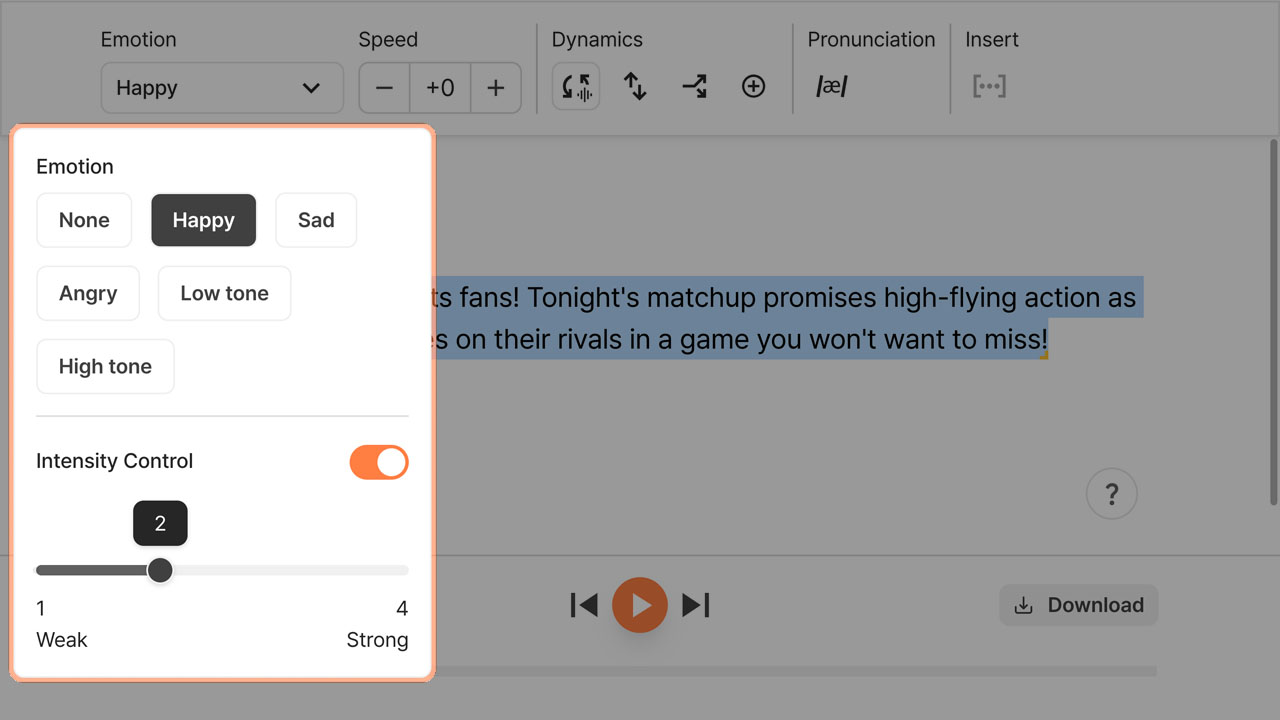
Typecast’s voice editing tools can help you deliver your written text-to-speech content in the best way possible. You’re free to customize your script in the way you want it to sound.
You won’t need to purchase expensive voice recording microphones or software when you have Typecast to do all of that for you.
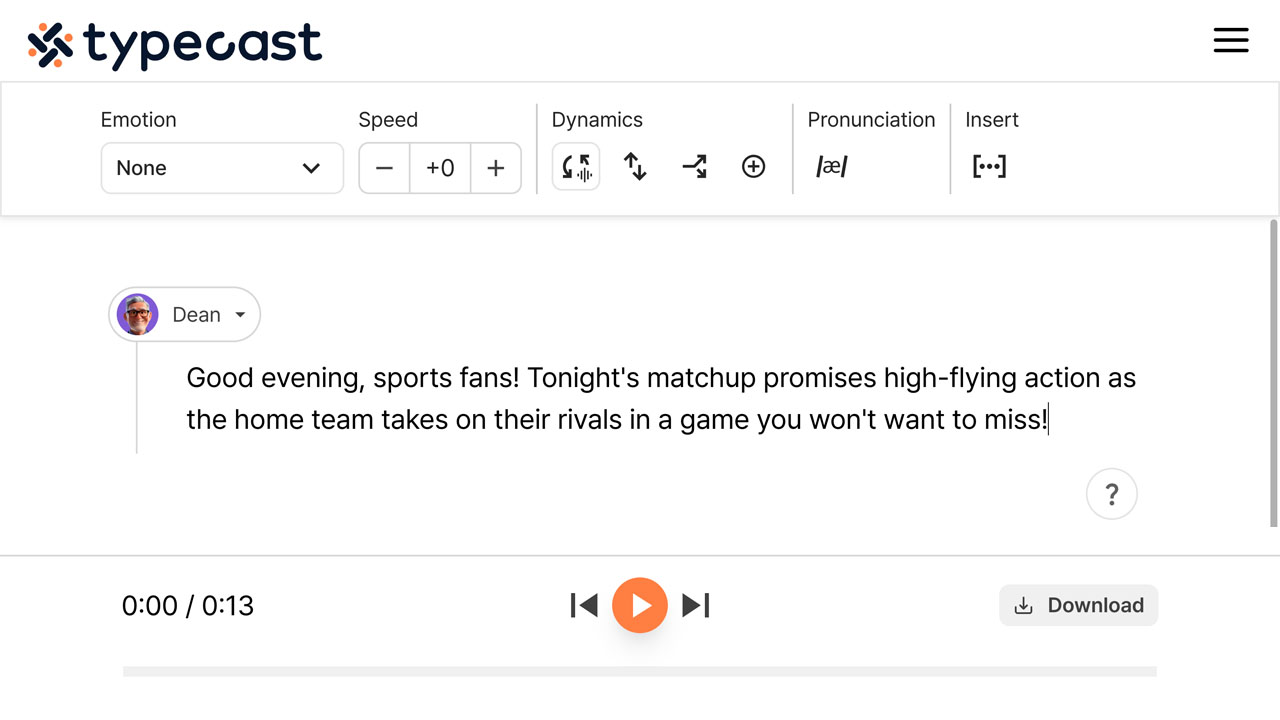
Once you’ve completed editing your document, you can export the file as an audio file or direct it to video.
Conclusion
Overall, using Speechify is a tool worth checking out for those who want to utilize text-to-speech to do the heavy reading for them, whereas TTS tools like Typecast are much better to create content.
It would be a great idea to try out both and see which one would better suit your need.









